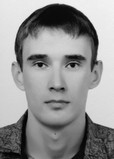Morphofunctional features of female students trained according to different physical education programs
Фотографии:
ˑ:
PhD, Associate Professor M.S. Golovin1
E.A. Shigaeva1
Associate Professor T.I. Kolosova1
Dr. Biol., Professor R.I. Aizman1
1Novosibirsk State Pedagogical University, Novosibirsk
Objective of the study was to identify indicators of physical health of female students of Novosibirsk State Pedagogical University (NSPU) engaged in various fitness programs compared to traditional physical education classes.
Methods and structure of the study. The study involved 60 female students aged from 18 to 22 years, attending the fitness center of NSPU "Green Fitness" and traditional physical education classes. The girls independently chose the type of health and fitness activities, which enabled to form three study groups: 1) main health group (MHG, n=15); 2) step aerobics (SA, n=30); 3) functional training (FT, n=15). During the academic year, the MHG female students were engaged in the main physical education program at the university. The SA group was involved in prolonged trainings within the target zone of their pulse using long-duration exercises for different muscle groups. The load intensity was dosed by changing the height of the platform, the principle of the lever, the amplitude of movements, and by increasing the musical tempo. The functional trainings were based on the activation of a large number of muscle groups and fibers of various types using complex static and dynamic loads, and included Cross Fit, TRX functional loops using various muscle stabilizers.
Results of the study and conclusions. Step aerobics and functional training help reduce body weight and total fat, improve external respiration, increase the efficiency of the cardiovascular system at rest and when performing physical loads, increase PWC170 and improve heart rate recovery. The standard physical education program was found to lead to insignificant improvements in physical health indicators, while most parameters of physical development and functional state did not change by the end of the academic year.
Keywords: physical education, fitness, step aerobics, functional training, female students.
References
- Golovin M.S., Balioz N.V., Krivoshchekov S.G., Aizman R.I. Integratsiya funktsionalnykh, psikhofiziologicheskikh i biohimicheskikh protsessov v organizme sportsmenov posle audiovizualnoy stimulyatsii [Integration of functional, psycho-physiological and biochemical processes in athletes' body after audiovisual stimulation]. Fiziologiya cheloveka. 2018. v. 44. no. 1. pp. 64-71.
- Lubysheva L.I., N.V. Peshkova Analiz razvitiya studencheskogo sporta: sostoyanie i perspektivyi [Analysis of development of student sports: state and prospects]. Teoriya i praktika fiz. kultury. 2014. # 1.pp. 39-41.
- Panfilov O.P., V.V. Borisova, T.A. Shestakova et al. Metodologicheskie osnovyi klassifikatsii integrirovannyih neparametricheskih vidov fizicheskih uprazhneniy (na primere fitnes-tehnologiy) [Methodological basis of classification of integrated nonparametric physical exercises (in terms of fitness technologies)]. Teoriya i praktika fiz. kultury. 2013. # 8. pp. 62-67.
- Saitov R.M., T.S. Lisitskaya Chto takoe «funktsionalny trening» [The Meaning of «Functional Training»]. Fizicheskaya kultura: vospitanie, obrazovanie, trenirovka. 2013. # 6. pp. 73-75.
- Subotyalov M.A., O.S. Nikulina Morfofunktsionalnyie i psihofiziologicheskie pokazateli devushek-legkoatletok s raznyim urovnem sportivnoy kvalifikatsii [Morphofunctional and psychophysiological indicators of female athletes with different sport skill levels]. Meditsina i obrazovanie v Sibiri. 2014. # 3. P. 22.
- Filippova Yu.S., M.S. Golovin Nekotoryie dannyie mediko-biologicheskogo otbora kandidatov v sbornuyu komandu Novosibirskoy oblasti po sportivnoy aerobike [Some data from biomedical selection of candidates for the Novosibirsk Region national team for sports aerobics]. International Journal of Experimental Education. 2014. no. 11-1. pp. 9-11.



 Журнал "THEORY AND PRACTICE
Журнал "THEORY AND PRACTICE